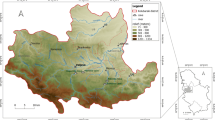Abstract
The region of Eastern Serbia is a highly dominant karst terrain with numerous geological and geomorphological features, especially caves. The speleotourism potential of these caves and other geosites still remains fully unrevealed. In this paper, we analyzed several caves with immense geotourism potential. These caves include Ceremošnja Cave, Ravništarka Cave, Resavska Cave, Rajkova Cave, Lazareva Cave and Vernjikica Cave. The aim of this paper is to emphasize the speleotourism potential of Eastern Serbia and to determine the current state and speleotourism potential of caves located in this area by applying the modified geosite assessment model (M-GAM). The results indicate that further speleotourism development should primarily be focused towards Rajkova Cave which has the highest main values. The results also emphasize the importance of additional (tourist) values which are currently at a low level among all analyzed geosites. This especially refers to tour guide service, interpretive panels and promotional activities which proved to be key elements at these types of destinations. Major improvement of these elements is necessary in the future in order to attract a larger number of visitors to these sites.



Similar content being viewed by others
References
Aley T (2010) Management strategies for responding to white-nose syndrome in bats. Natl Speleol Soc News 68(2):10–14
Anderson J (2010) Caves and karst geotourism in Australia. In: Dowling R, Newsome D (eds) Global geotourism perspectives. Goodfellow Publishers Ltd, Oxford, pp 3–18
Antić A, Tomić N (2017) Geoheritage and geotourism potential of the Homolje area (eastern Serbia). Acta Geoturistica 8(2):67–78
Boškov J, Kotrla S, Jovanović M, Tomić N, Lukić T, Rvović I (2015) Application of the preliminary geosite assessment model (GAM): the case of the Bela Crkva municipality (Vojvodina, North Serbia). Geographica Pannonica 19(3):146–152
Božić S, Tomić N (2015) Canyons and gorges as potential geotourism destinations in Serbia: comparative analysis from two perspectives—general tourists’ and pure geotourists. Open Geosci 7:531–546
Bruno DE, Crowley BE, Gutake JM, Moroni A, Nazarenko OV, Oheim KB, Ruban DA, Tiess G, Zorina OS (2014) Paleogeography as geological heritage: developing geosite classification. Earth Sci Rev 138:300–312
Bruschi VM, Cendrero A (2005) Geosite evaluation. Can we measure intangible values? Il Quaternario 18:293–306
Cigna AA, Burri E (2000) Development, management and economy of show caves. Int J Speleol 29(1):01–1):27
Coratza P, Giusti C (2005) Methodological proposal for the assessment of the scientific quality of geomorphosites. Il. Quaternario 18:307–313
de Freitas CR (2010) The role and importance of cave microclimate in the sustainable use and management of show caves. Acta Carsologica 39(3):477–489
Djurović P, Mijović D (2006) Geoheritage of Serbia—representative of its total geodiversity. Collection of papers - Faculty of Geography at the University of Belgrade 54:5–18
Erhartič B (2010) Geomorphosite assessment. Acta Geogr Slov 50(2):295–319
Gillieson DS (1996) Caves: processes, development and management. Blackwell, Oxford
Gillieson DS (2011) Management of caves. In: van Beynen PE (ed) Karst management. Springer, Dordrecht, pp 141–158
Gray M (2004) Geodiversity: valuing and conserving abiotic nature. John Wiley and Sons Ltd, Chichester
Hose TA (1997) Geotourism—selling the earth to Europe. In: Marinos PG, Koukis GC, Tsiambaos GC, Stournaras GC (eds) Engineering geology and the environment. A.A Balkema, Rotterdam, pp 2955–2960
http://www.postojnska-jama.eu/sl/novice/2017/rekordno-poslovanje-obtozbe-zavrzene/. Accessed 7 April 2017
Lazarević R (1975) Rajkova Cave. Local community “Boža Stojanović”, Majdanpek
Lazarević R (1981) Cave adaptation for tourism in Serbia. Collection of papers of 8th Yugoslav speleological congress, Belgrade
Lazarević R (1988) Ceremošnja, 2nd edn. Working Organization for hospitality and tourism Partizan, Kučevo
Lazarević R (1998) Karst of Dubašnica, Gornjan and Majdanpek. Serbian Geographical Society, Belgrade
Lješević M (1981) Aesthetic factors in cave decorating for tourism. Collection of papers of 8th Yugoslav speleological congress, pp 167–171
Newsome D, Moore SA, Dowling RK (2012) Natural area tourism: ecology, impacts and management. Channel View Publications, Clevedon
Pereira P, Pereira D, Caetano Alves MI (2007) Geomorphosite assessment in Montesinho Natural Park (Portugal). Geogr Helv 62:159–168
Petrović J (1971) Resavske Caves. Serbian Tourist Council, Belgrade
Petrović A (2006) Speleotourism in Serbia—conditions and development perspectives. Collection of papers - Faculty of Geography at the University of Belgrade 54:183–194
Pralong JP (2005) A method for assessing the tourist potential and use of geomorphological sites. Géomorphologie 11(3):189–196. https://doi.org/10.4000/geomorphologie.350
Reynard E (2008) Scientific research and tourist promotion of geomorphological heritage. Geogr Fis Din Quat 31:225–230
Reynard E, Fontana G, Kozlik L, Scapozza C (2007) A method for assessing “scientific” and “additional values” of geomorphosites. Geographica Helvetica 62:148–158
Serrano E, González-Trueba JJ (2005) Assessment of geomorphosites in natural protected areas: the Picos de Europa National Park (Spain). Géomorphologie 11(3):197–208. https://doi.org/10.4000/geomorphologie.364
Tomić N (2011) The potential of Lazar Canyon (Serbia) as a geotourism destination: inventory and evaluation. Geographica Pannonica 15:103–112
Tomić N, Božić S (2014) A modified geosite assessment model (MGAM) and its application on the Lazar Canyon area (Serbia). Int J Environ Res 8(4):1041–1052
Tomić N, Marković SB, Korać M, Mrđić N, Hose TA, Vasiljević DA, Jovičić M, Gavrilov MB (2015) Exposing mammoths: from loess research discovery to public palaeontological park. Quat Int 372:142–150
Vujičić MD, Vasiljević DA, Marković SB, Hose TA, Lukić T, Hadžić O, Janićević S (2011) Preliminary geosite assessment model (GAM) and its application on Fruška Gora Mountain, potential geotourism destination of Serbia. Acta Geographica Slovenica 51:361–377
White S, Wakelin-King GA (2014) Earth sciences comparative matrix: a comparative method for geoheritage assessment. Geogr Res 52(2):168–181
Zorn M, Erhartič B, Komac B (2009) La Slovénie, berceau du géotourism karstique. Karstologia 54:1–10
Zouros NC (2007) Geomorphosite assessment and management in protected areas of Greece. The case of the Lesvos island coastal geomorphosites. Geographica Helvetica 62:169–180
Funding
This research was supported by project 176020 of the Ministry of Education, Science and Technological Development of the Republic of Serbia.
Author information
Authors and Affiliations
Corresponding author
Rights and permissions
About this article
Cite this article
Tomić, N., Antić, A., Marković, S.B. et al. Exploring the Potential for Speleotourism Development in Eastern Serbia. Geoheritage 11, 359–369 (2019). https://doi.org/10.1007/s12371-018-0288-x
Received:
Accepted:
Published:
Issue Date:
DOI: https://doi.org/10.1007/s12371-018-0288-x




